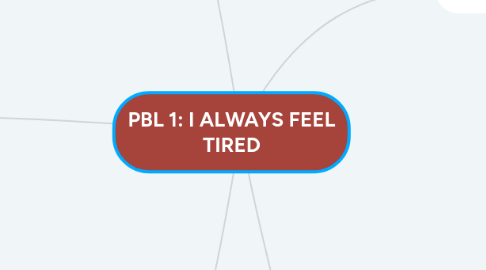
1. ANEMIA
1.1. What is it?
1.1.1. decrease in oxygen carrying capacity because of a decrease in RBCs, Hb content or presence of abnormal variants of Hb
1.2. Generalized signs and symptoms
1.2.1. shortness of breath
1.2.2. extreme fatigue
1.2.3. pallor
1.2.4. headache and dizziness
1.2.5. heart palpitations
1.2.6. in case of pernicious anemia: gastrointestinal symptoms
1.3. Diagnostic tests
1.3.1. physical examinations
1.3.2. complete blood count (CBC)
1.3.3. iron study test
1.3.4. folate and serum vitamin B12 levels
1.4. Treatment
1.4.1. for iron-deficiency anemia: iron supplements; for megaloblastic anemia: vitamin B12 and folic acid supplements
1.4.2. hormonal treatment: erythropoietin and darbepoietin
1.5. Common types
1.5.1. iron-deficiency anemia
1.5.2. megaloblastic anemia
1.5.3. sickle cell anemia
1.5.4. hemolytic anemia caused by thalassemia
2. ERYTHROPOIESIS
2.1. 2 million new RBCs generated every second
2.2. Location
2.2.1. first trimester: yolk sac
2.2.2. second trimester: liver and spleen
2.2.3. third trimester onwards: bone marrow
2.3. pluripotent stem cell → proerythroblast → erythroblast → reticulocyte → erythrocyte
2.4. erythropoietin regulates this process
2.5. vitamin B12, folate and iron are requires in this process
3. CLINICAL EXAMINATION
3.1. inspection (generalized and specific)
3.2. palpation of lymph nodes (axillary, parotid, submandibular, anterior and posterior cervical chains, inguinal, epitrochlear, etc.)
3.3. other examinations: checking liver, spleen, bone tenderness, etc.
4. BLOOD
4.1. Characteristics
4.1.1. opaque
4.1.2. sticky
4.1.3. only fluid tissue in the body
4.1.4. slightly alkaline (7.35-7.45)
4.1.5. color changes according to oxygenation level
4.1.6. makes up 8% of our total body weight
4.2. Functions
4.2.1. transportation of oxygen and carbon dioxide to and from the cells, nutrients, metabolic wastes, etc.
4.2.2. regulation of body temperature, pH and fluid volume
4.2.3. protection against foreign bodies
4.3. Components
4.3.1. WBCs (<1%)
4.3.2. Plasma (52-62%)
4.3.2.1. water
4.3.2.2. proteins
4.3.2.2.1. albumin (60%)
4.3.2.2.2. globulins (35%)
4.3.2.2.3. fibrinogens (4%)
4.3.2.3. other substances
4.3.3. RBCs (38-48%)
4.3.4. Platelets (<1%)
4.4. Erythrocytes
4.4.1. characteristics
4.4.1.1. biconcave
4.4.1.2. no mitochondria
4.4.1.3. no nucleus
4.4.2. contain Hemoglobin
4.4.2.1. has 4 globin chains (2 α and 2 β)
4.4.2.2. each globing chain has a heme group with and iron atom in them
4.4.2.3. there are multiple variants (HbF in fetuses, HbA in adults)
4.4.2.4. 14-17 g/dl in adult male, 13-16 g/dl in adult female
